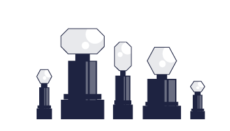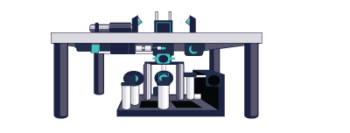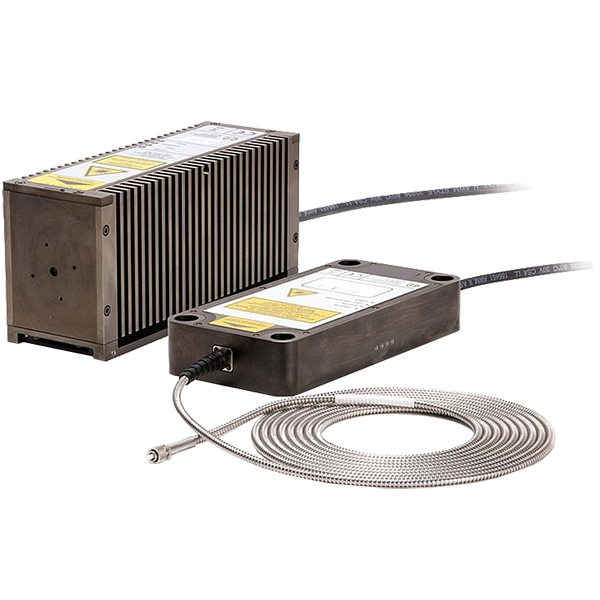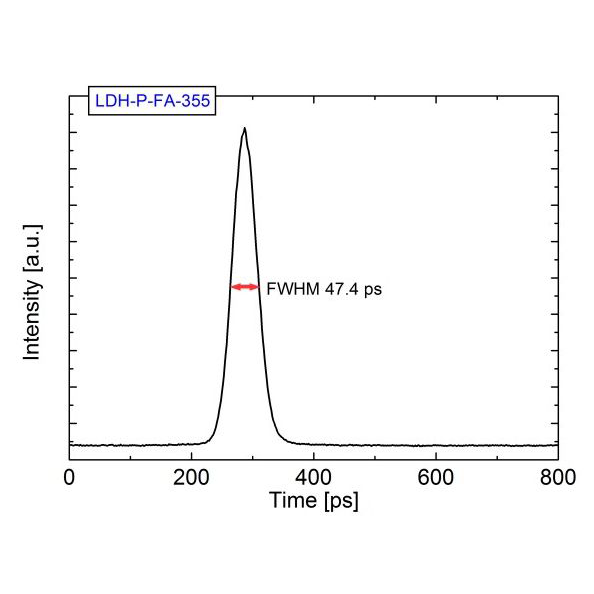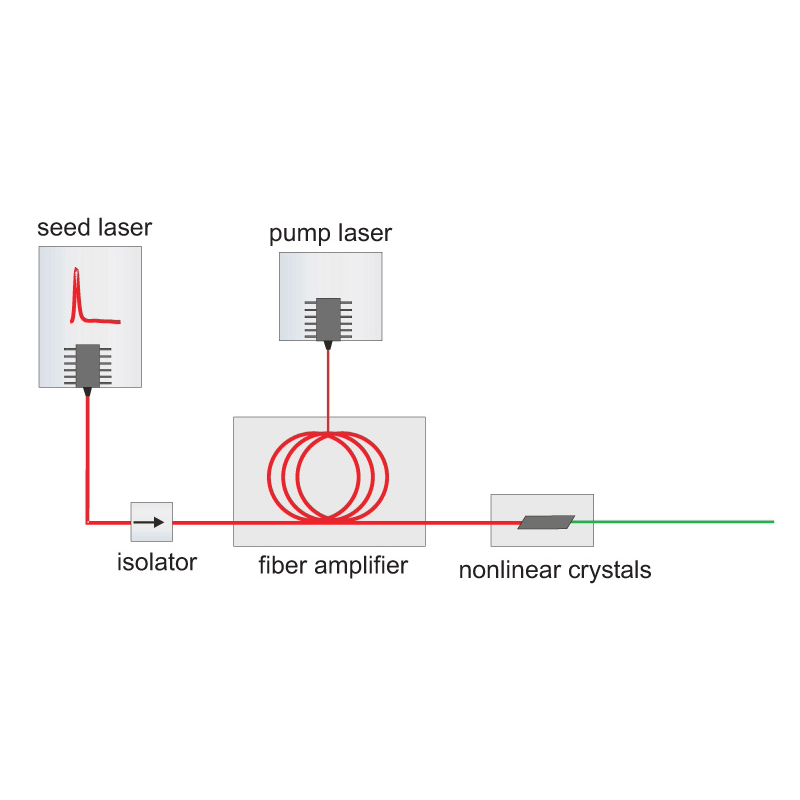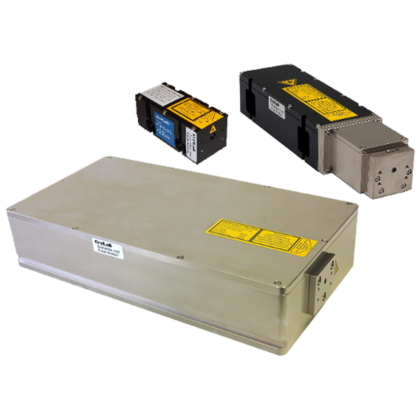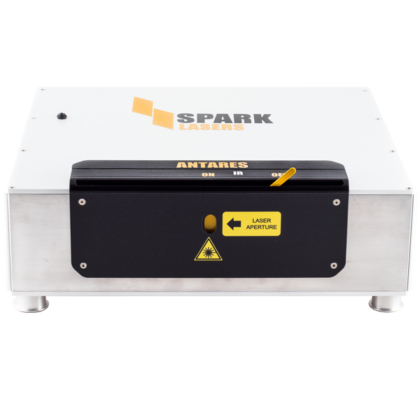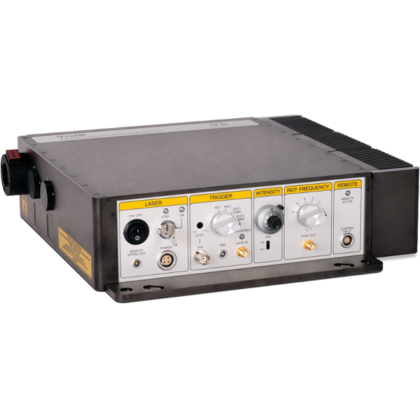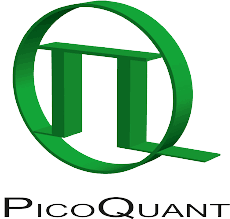Amplified Picosecond Pulsed Laser Diode Heads
- 40 mW pulsed and CW laser head at 765 nm
- 50 mW pulsed and CW laser head at 532 nm
- 1 mW pulsed laser head at 595 nm
- 100 mW pulsed laser head at 775 nm
- Available wavelengths: 266, 355, 515, 531, 560, 766, 775, 1030, 1064, and 1532 to 1560 nm
- Pulse width down to 70 ps (FWHM)
- Average output power between 1 mW and 450 mW (depending on wavelength)
- Repetition rates up to 80 MHz
- Collimated beam or PM fibre output with FC/APC fibre connector
The Scheme of the LDH-FA Seriespicosecond pulsed laser diode heads of the LDH-FA Series are based on a Master Oscillator Fibre Amplifier (MOFA) concept with optional frequency conversion. The master oscillator generates infrared picosecond pulses with variable repetition rates up to 80 MHz using the proven gain-switching techniques from PicoQuant. The output of this seed laser is directly connected to a single or double stage fibre amplifier, which boosts the output from the seed laser by several dB while maintaining the other characteristics of the seed laser beam like the emission wavelength, polarization and the short pulse width.
Conversion to UV, green, yellow, orange, or red
Pulse width of LDH-P-FA-355 measured with streak cameraThe high pulse energies of the amplified infrared lasers permit an efficient wavelength conversion using, for example, single pass second harmonic generation (SHG), third harmonic generation (THG) or even fourth harmonic generation (FHG). In that way it is, for the first time, possible to generate picosecond pulses at 266, 355, 515, 531, 560, 595, 766, or 775 nm with adjustable repetition rates up to 80 MHz and pulse widths below 100 ps (FWHM). As an example, the pulse width (FWHM) of a LDH-P-FA-355 emitting at 355 nm has been determined as 47.4 ps by means of a streak camera measurement.
Measurement courtesy of Dr. Tobias Korn, A.G. Prof Dr Christian Schüller, University of Regensburg, Germany.
Average output power up to 450 mW
The laser heads are available in two versions that either emit from a polarization maintaining single mode fibre with FC/APC fibre connector or generate a collimated output beam. The fibre coupled version is available at 531, 595, 1030, 1063, or 1530 nm and can generate up to 50 mW (1030 and 1063 nm) average output power at maximal repetition rate. The laser heads with collimated output are available at 266, 355, 515, 531, 560, 766, 775, 1062, and 1532 nm. The achievable average power levels of these laser heads depend on the number of amplification stages and the efficiency of the optional frequency conversion stage and can reach more than 450 mW for the 1532 nm laser at maximum repetition rate.
Repetition rate up to 80 MHz
Most laser heads of the LDH-FA Series are designed to work at repetition rates up to 80 MHz. The minimum repetition rate depends on the exact fibre amplifier architecture used in the specific laser head and ranges from 1 kHz to 1 MHz. For the fibre coupled versions even repetition rates down to 10 kHz are possible. Driving signals with repetition rates in the MHz range are readily delivered by the PDL Series drivers.
Fibre coupling and combiner
Exception made below 355 nm, the laser heads of the LDH-FA Series can be optionally coupled into a variety of optical fibres (multi-mode, single mode, or polarization maintaining single mode) via different connector types. We recommend FC/APC connectors for most applications, since they prevent back reflections that can interfere with laser stability. For details see our solutions for fibre coupling.
Furthermore, the laser heads of the LDH-FA can be combined with up to 4 other laser heads (LDH Series ) into a single delivery fibre within our Laser Combining Unit (LCU).










